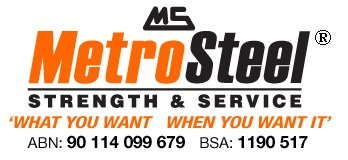Two of the most popular materials used in sheet metal applications are aluminium and stainless steel. Although people often get them mixed up, they have many contrasting properties. As such, they’re generally used for different purposes. With this in mind, let’s take a closer look at the properties that makes aluminium significantly distinct from stainless steel.
Natural vs alloy
You might be surprised to learn that aluminium is actually a natural element. In fact, according to Wikipedia, it’s the most abundant metal found within the Earth’s crust. It’s most commonly found in Bauxite ore and is very soft in its pure form. For this reason, to make it commercially usable it’s mixed with a whole host of other alloys to make aluminium metal as we know it.
Conversely stainless steel doesn’t exist as a natural element and is actually a man-made product or alloy. It’s made up of a combination oF iron ore, manganese, nickel, copper and somewhere between 10% and 30% chromium oxide. This provides the anti-corrosive and rust resistant properties that stainless steel in known for.
Strength and weight
Typically aluminium sheet metal isn’t as strong as steel. However to counteract this, aluminium is around one third lighter than steel. Because of the fact that it’s the lighter material, it’s generally used in the construction of aircraft, vehicles, and in some cases, boats. Alternatively, because stainless steel is heavier, stronger, and and more durable, it’s far less likely to warp or deform under force, weight, or heat. For this reason is used more in building construction. Speaking of strength, did you know that stainless steel can be recycled over and over again without losing any durability? As such it’s considered a more eco-friendly option than aluminium.
Conductivity vs temperature
Some metals have a greater conductivity rate than others. Thermal conductivity is described to show the way that certain materials transfer heat. For example,those with a low heat conduction transfer heat at a much lower rate, while those with a high conductivity rate transfer heat quickly. Aluminium has a particularly high thermal conductivity rate, which is one of the reasons it’s used in the manufacture of A/C units and car radiators.
That said, steel can be used at far greater temperatures without bending, warping, or fracturing than aluminium which becomes soft at any temperature over 200 degrees centigrade. This is why it’s commonly used on constructions such as heat exchangers.
Cost vs time
The steel industry is the third largest industry in the world after gas and oil with an estimated annual turnover of $900 billion. This is mainly down to global demand. However from the initial point of extracting the bauxite ore to the point of rolling out the finished steel numerous costly processes are involved and this is why steel is more expensive. Alternatively, to make aluminium sheeting takes far less time and expense making it a more cost effective option.
The fact is that while each metal is used to carry out specific tasks, they are both important metals which are commonly used. If you have a particular project in mind and aren’t entirely sure which metal to use, then why not ask the professionals. At Metro Steel, we’ve been fabricating steel and producing aluminium metal for many years. As such we have the experience and the knowledge to turn your plans or ideas into reality. Give us a call today on 07 3204 1000.
 Talk to an Expert (07) 3204 1000
Talk to an Expert (07) 3204 1000 Working Hours - Mon – Fri 7:00 AM – 4:00 PM
Working Hours - Mon – Fri 7:00 AM – 4:00 PM